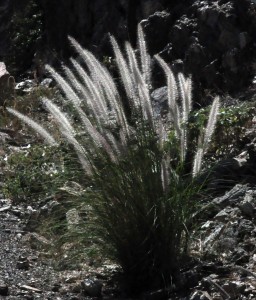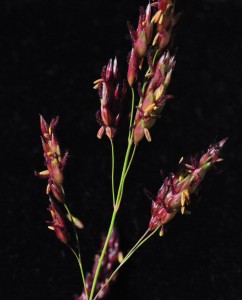Since I decided to photograph grasses I have made several trips up the mountains. Most of the species have finished blooming for the year and are loaded with seeds. I love seeing the many forms that these grasses take. I can see it is going to be quite a challenge getting to know them all.
In my growing collection of plant books, there were none for the grasses, so I bought three to start to learn them. One was first published in 1899, another in 1935 and the third in 1979, so there may be some problems in name changes. All three have line drawings which are quite beautiful, but are not able to show the colors of the flowers, and the fine details of their fruits.
I realized that a better way of learning grasses is to see the plants themselves. It dawned on me that there is a huge collection of grasses, mounted and labeled at the University of Arizona Herbarium. So I took my camera and set off for the Campus. In the building that houses the herbarium I met many of my botanical friends and they helped me find the grasses I was looking for. In about four hours I photographed over 100 of them. A few days later I went to the collection put together by Joan Tedford at the Palisades ranger station in the Catalina Mountains, and photographed that collection (over 70 species). I am beginning to have a way of identifying the grasses I have been seeing and photographing. By the time Spring comes around I will be better equipped to name the different species as they come into bloom.
In my hikes I have found a few species in flower. It turns out that the showiest ones happen to be problem grasses that are crowding out the native species in certain areas. On one trip I found two of them side by side, both of which are a real problem in this part of the world. It turns out that they are related. (Pennisetum ciliare or Bufflegrass, and Pennisetum setaceum or Fountain Grass). You can see their similarities in these pictures. I found another non-native grass in beautiful bloom. It is not as much of a problem, and is an important food crop, Sorghum halpense or Johnsongrass.
Bufflegrass and Fountain grass
Johnsongrass flowers



